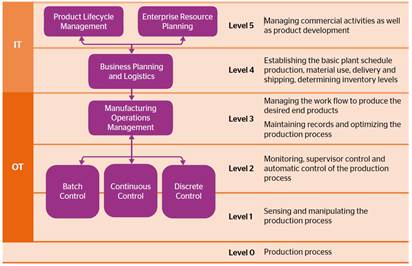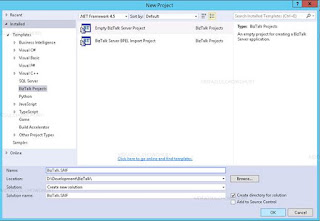Software Engineering Process Models
CMM
The CMM provides a conceptual structure for improving the management and development of software products in a disciplined and consistent way. It does not guarantee that software products will be successfully built or that all problems in software engineering will be adequately resolved.
The CMM identifies practices for a mature software process and provides examples of the state-of-the-practice (and in some cases, the state-of-the-art), but it is not meant to be either exhaustive or dictatorial.
The CMM identifies the characteristics of an effective software process, but the mature organization addresses all issues essential to a successful project, including people and technology, as well as process.
CMM is a reference model of matured practices in a specific industry and mainly focused on the Software Industry. It is also hard to integrate different disciplines all together. Support for coordination of multi-disciplined activities is required to build a successful project
CMM only deals with software practices and doesn’t deal with system practices.
ISO 9001
ISO 9001 is a quality management standard. It applies to all types of organizations. It doesn't matter what size they are or what they do. It can help both product and service oriented organizations achieve standards of quality that are recognized and respected throughout the world. It includes several other quality standards like: including ISO 9002, ISO 9003, ISO 9004, and ISO 8402 which makes it a more efficient modeling technique. ISO 9002 covers the QA for production and installation, ISO 9003 for final Inspection and Test, ISO 9004 for Quality management and Quality system guidelines, ISO 8402 for Quality – Vocabulary
BOOTSTRAP
BOOTSTRAP is a European enhanced and adapted process methodology for software engineering process system assessment and improvement.
The design philosophy behind BOOTSTRAP is to present a combined view of software life-cycle processes and quality system principles.
Philosophy of BOOTSTRAP:
An enhanced and European-adapted CMM
A technical view of software development life cycles
An assessment-based process improvement approach
An integration of CMM with ISO 9001 quality system processes
ISO 15504
ISO 15504 is developed by ISO/IEC JTC1/SC7/WG10 since 1991 which is named ‘SPICE – Software Process Improvement and Capability Determination.’
ISO 15504 is a 2-D Process Model which was inspired from BOOTSTRAP attribute-based profile representation for process capability
ISO 15504 presents a combined view of software lifecycle processes and quality system principles
ISO 15504 has 5 Process categories (PCs), 35 Processes (PRs), 201 Base Practices (BPs)
ISO 15504 has 5 Capability Levels (0- Incomplete, 1-Performed, 2-Managed, 3-Established, 4-Predictable, and 5-Optimizing)
ISO 15504 process scopes are as follows:
- Practice: Performance Rating
- Process – Capability Level with Attribute
- Process – Project Capability Profile
SEPRM
SEPRM is a 2-D Reference Process Model
SEPRM provides the whole picture of the software process model
It is a reference model to present a comprehensive and integrated process system
It has a strong foundation and benchmark processing support for the SE Process Modeling
The complexity of mutually mapping of different models is n*(n-1) where as this can be reduced to n by using a reference model for different model mapping
SEPRM has 3 Sub-Systems, 12 Categories, 51 Processes and 444 Base Process Activities or BPAs
The Capability Levels of SEPRM are Incomplete, Loose, Integrated, Stable, Effective, and Refined
In SEPRM capability Assessment:
- Practice are based on Performance Rating method
- Process are based on Capability Levels
- Projects are based on Capability Levels and Process Profile method
- Organization is based on Capability Levels and Process Profile method
Operating Complexity of models is as follows:
- CMM: 7.5 Person Hours
- ISO9001: 9 Person Hours
- BOOTSTRAP: 10.2 Person Hours
- SEPRM: 27.2 Person Hours
- ISO15504: 106.2 Person Hours
SEPRM establishes a unified framework for the SE process systems
SEPRM enables the transformation of process capability levels between existing process models and standards
SEPRM develops a formal and algorithmic approach to SE process theory and practices
The CMM provides a conceptual structure for improving the management and development of software products in a disciplined and consistent way. It does not guarantee that software products will be successfully built or that all problems in software engineering will be adequately resolved.
The CMM identifies practices for a mature software process and provides examples of the state-of-the-practice (and in some cases, the state-of-the-art), but it is not meant to be either exhaustive or dictatorial.
The CMM identifies the characteristics of an effective software process, but the mature organization addresses all issues essential to a successful project, including people and technology, as well as process.
CMM is a reference model of matured practices in a specific industry and mainly focused on the Software Industry. It is also hard to integrate different disciplines all together. Support for coordination of multi-disciplined activities is required to build a successful project
CMM only deals with software practices and doesn’t deal with system practices.
ISO 9001
ISO 9001 is a quality management standard. It applies to all types of organizations. It doesn't matter what size they are or what they do. It can help both product and service oriented organizations achieve standards of quality that are recognized and respected throughout the world. It includes several other quality standards like: including ISO 9002, ISO 9003, ISO 9004, and ISO 8402 which makes it a more efficient modeling technique. ISO 9002 covers the QA for production and installation, ISO 9003 for final Inspection and Test, ISO 9004 for Quality management and Quality system guidelines, ISO 8402 for Quality – Vocabulary
BOOTSTRAP
BOOTSTRAP is a European enhanced and adapted process methodology for software engineering process system assessment and improvement.
The design philosophy behind BOOTSTRAP is to present a combined view of software life-cycle processes and quality system principles.
Philosophy of BOOTSTRAP:
An enhanced and European-adapted CMM
A technical view of software development life cycles
An assessment-based process improvement approach
An integration of CMM with ISO 9001 quality system processes
ISO 15504
ISO 15504 is developed by ISO/IEC JTC1/SC7/WG10 since 1991 which is named ‘SPICE – Software Process Improvement and Capability Determination.’
ISO 15504 is a 2-D Process Model which was inspired from BOOTSTRAP attribute-based profile representation for process capability
ISO 15504 presents a combined view of software lifecycle processes and quality system principles
ISO 15504 has 5 Process categories (PCs), 35 Processes (PRs), 201 Base Practices (BPs)
ISO 15504 has 5 Capability Levels (0- Incomplete, 1-Performed, 2-Managed, 3-Established, 4-Predictable, and 5-Optimizing)
ISO 15504 process scopes are as follows:
- Practice: Performance Rating
- Process – Capability Level with Attribute
- Process – Project Capability Profile
SEPRM
SEPRM is a 2-D Reference Process Model
SEPRM provides the whole picture of the software process model
It is a reference model to present a comprehensive and integrated process system
It has a strong foundation and benchmark processing support for the SE Process Modeling
The complexity of mutually mapping of different models is n*(n-1) where as this can be reduced to n by using a reference model for different model mapping
SEPRM has 3 Sub-Systems, 12 Categories, 51 Processes and 444 Base Process Activities or BPAs
The Capability Levels of SEPRM are Incomplete, Loose, Integrated, Stable, Effective, and Refined
In SEPRM capability Assessment:
- Practice are based on Performance Rating method
- Process are based on Capability Levels
- Projects are based on Capability Levels and Process Profile method
- Organization is based on Capability Levels and Process Profile method
Operating Complexity of models is as follows:
- CMM: 7.5 Person Hours
- ISO9001: 9 Person Hours
- BOOTSTRAP: 10.2 Person Hours
- SEPRM: 27.2 Person Hours
- ISO15504: 106.2 Person Hours
SEPRM establishes a unified framework for the SE process systems
SEPRM enables the transformation of process capability levels between existing process models and standards
SEPRM develops a formal and algorithmic approach to SE process theory and practices



Comments
Post a Comment